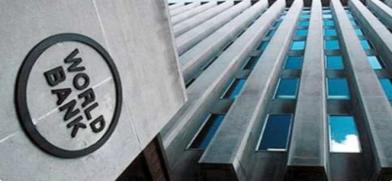World Bank South Asia report: Region to grow by 7.1 percent; India by 8.3 percent, Bangladesh 6.4 in 20-21; Maldives by 22.3 percent
The South Asia region is estimated to grow by 7.1 percent in the year 2021-22 amid the global surge in demand and targeted measures to contain the pandemic, the World Bank said in its latest report, adding the recovery, however, remains “fragile” and “uneven” across the countries in the region

The South Asia region is estimated to grow by 7.1 percent in the year 2021-22 amid the global surge in demand and targeted measures to contain the pandemic, the World Bank said in its latest report, adding the recovery, however, remains “fragile” and “uneven” across the countries in the region. India, the region’s largest economy, is estimated to grow by 8.3 percent amid an increase in public investment and boost to the manufacturing sector, the World Bank said in its latest report on South Asia, titled Shifting Gears: Digitization and Services-Led Development.
The report says Bangladesh is likely to grow by 6.4 percent in the year 2021-22--mainly due to recovery in exports and the increased domestic consumption. During the same period, Pakistan’s economy is forecasted to grow by 3.4. The report estimated Pakistan’s economic growth 3.5 percent, in the fiscal year 20-21.
“While the year-on-year growth remains strong in the region, albeit from a very low base in 2020, the recovery has been uneven across countries and sectors,” the report says.
The Maldives, which recorded a contraction of around 33 percent in 2020, is estimated to grow by a whopping 22.3 percent in 2021, mainly due to the recovery of the high-value tourism sector.
The report forecast 11 percent and 12 percent growth for the Maldives in the following years, indicating a fairly good prospect for the small country.
For Nepal, the report forecasted a 3.9 percent growth rate for the fiscal year 2021-22 and an estimated 3.5 percent growth rate in 2020-21.
The World Bank report also highlighted the “increasing” role of services amid “rapid technological change” and “accelerated structural transformation of global economic activity.” The adoption of digital technologies, it says, made services more “tradable” and increased the productivity of other sectors.
Sri Lanka, which is currently facing a serious forex crisis, is estimated to grow by 3.3 percent. However, the country’s prospect in the next years also looks bleak with forecasted growth of 2.1 percent and 2.2 percent in 2022 and 2023 respectively.
Bhutan remains the only country in the region to record contraction for the second consecutive year. The report estimated its economy to contract by 1.2 percent in the fiscal year 20-21 in comparison to the 0.6 percent contraction it recorded in 2019-20.
Hans Timmer, World Bank’s chief economist for the South Asia Region, said the region has a “comparative advantage” in exporting services. To realize the potential of the services-led development, he said, “the region needs to rethink regulations and establish new institutions to support innovation and competitiveness.”
He also added that the region failed to break into the manufacturing export market.
Hartwig Schafer, World Bank Vice President for the South Asia Region said, “While short-term recovery is important, policymakers should also seize the opportunity to address deep-rooted challenges and pursue a development path that is green, resilient, and inclusive.”
(SAM)








Post a Comment